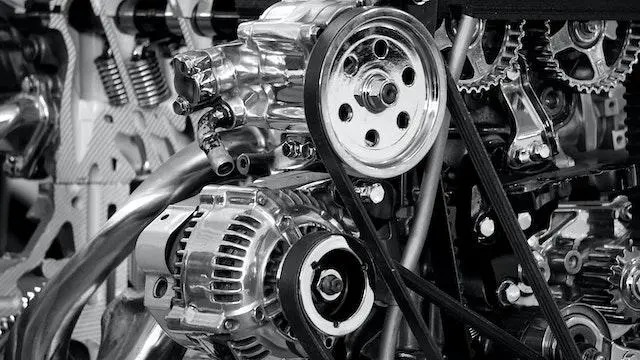Have you ever wondered how your car’s engine comes to life with just the turn of a key or push of a button? Behind this seemingly simple action lies a crucial component called the starter motor. This small but powerful device is responsible for initiating the combustion process in your engine, making it an essential part of any vehicle.
If you’re curious about how a starter motor works and the vital components of starter that make this process possible, this guide explains everything in detail.
Understanding the Starter Motor:
A starter motor is an electric motor that helps crank the internal combustion engine to start the vehicle. Before the engine can power itself, it requires an initial push to get the pistons moving and the fuel-air mixture ignited. That’s where the starter motor comes in.
Without a properly functioning starter motor, your car wouldn’t start at all. It draws power from the car battery and uses a gear mechanism to turn the engine over until the combustion cycle can sustain itself.
How Does a Starter Motor Work?
The operation of a starter motor may seem complex, but it happens in a matter of seconds every time you start your car. Here’s how it works step by step:
Ignition Activation:
When you turn the ignition key or press the start button, an electric current flows from the battery to the starter motor via a component called the solenoid.
Engagement of the Pinion Gear:
The solenoid acts like a switch and pushes a small gear, known as the pinion gear, forward to mesh with the teeth on the engine’s flywheel.
Cranking the Engine,:
Once engaged, the starter motor spins the pinion gear, which rotates the flywheel and turns the crankshaft. This movement allows the engine to draw in air and fuel and start the combustion process.
Disengagement:
As soon as the engine starts running on its own, the pinion gear retracts from the flywheel to avoid damage, and the starter motor switches off.
Main Components of a Starter Motor:
To understand how a starter motor functions, it’s important to know its key components. Each part plays a specific role in ensuring the motor operates smoothly:
- Armature: The rotating part of the motor that generates motion.
- Commutator: Helps in reversing the current to keep the armature spinning.
- Brushes: Provide electrical contact to the armature.
- Field Coils or Permanent Magnets: Create the magnetic field needed for rotation.
- Solenoid: Works like an automatic switch and moves the pinion gear into place.
- Pinion Gear: Engages with the flywheel to crank the engine.
Each of these components of the starter needs to function properly for the starter motor to work efficiently.
Types of Starter Motors:
There are different types of starter motors used in vehicles, depending on the design and power requirements:
Direct Drive Starter Motor:
This is the traditional type where the pinion gear is directly connected to the armature.
Gear Reduction Starter Motor:
Uses a set of gears to increase torque, making it more efficient for modern vehicles.
Permanent Magnet Starter Motor:
Compact and lightweight, these are commonly found in smaller cars.
Inertia Starter Motor:
Uses inertia to push the pinion gear into the flywheel, though it is less common today.
Common Problems with Starter Motors:
Like any automotive component, starter motors can develop issues over time. Some common problems include:
- Clicking sound when turning the key (could indicate a faulty solenoid).
- Grinding noise (may mean the pinion gear isn’t engaging properly).
- Slow cranking or no response at all (often due to a weak battery or worn-out brushes).
Regular maintenance and timely repairs can extend the life of your starter motor and prevent unexpected breakdowns.
Why Maintaining Your Starter Motor Matters:
A failing starter motor can leave you stranded. To avoid this, watch for warning signs like dimming lights when starting or repeated clicking noises. Professional inspection and maintenance can ensure your starter motor stays reliable.
For more resources and expert advice on starter motors and other automotive components, visit unitechmotor.com for reliable information and high-quality products.
Conclusion:
The starter motor may seem like a small part of your car, but its role in getting your engine up and running is indispensable. By understanding how it works and recognizing the importance of its components, you can take better care of your vehicle and avoid costly repairs.
Whether you’re learning about starter motors or looking for trusted solutions, exploring the detailed guides and products on unitechmotor.com can help you make informed decisions.


